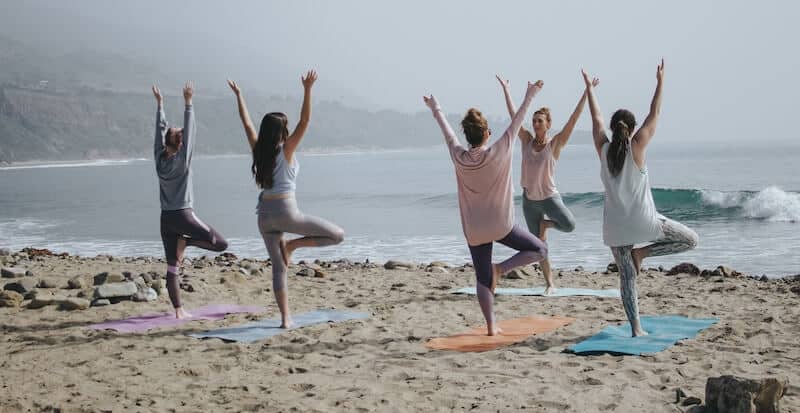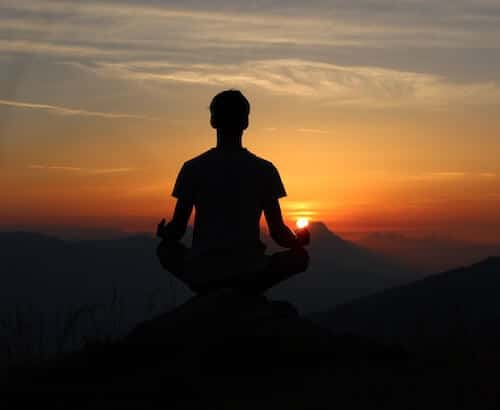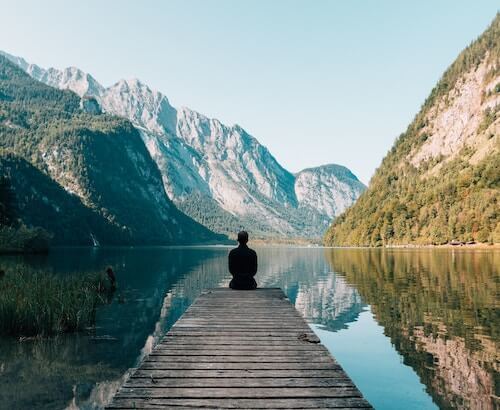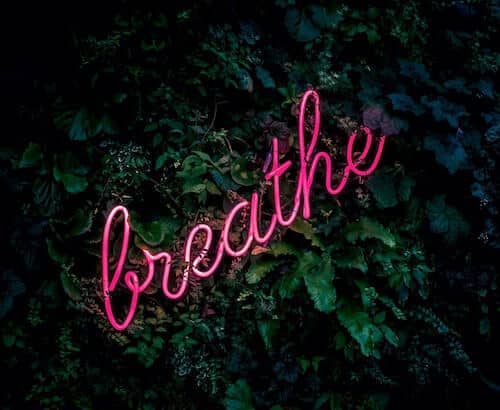7 Mindfulness Exercises for Relaxation
There seems to be a constant hum of activity in the majority of our lives. Even when we find physical stillness at the end of a long day, the mind often continues to race. Thoughts about things we should have done differently or fears we may have about things to come. They flood us without us being consciously aware of it. Many of these thoughts replay through our subconscious mind and so they go largely undetected. However, while there is much that pulls for our attention every day, exploring a variety of mindfulness exercises for relaxation can help us to truly feel into what it means to be at peace.

What Does It Mean to Relax?
It seems like a simple question, but we may not be entirely aware of what exactly happens when we enter into a state of relaxation. On a mental level, relaxation can be experienced as a sense of inner peace, acceptance, and contentment with things as they are. When we are relaxed, we find ourselves absent of worry, fear, and concern. At the very least, these things have no hold over our emotional and physical realities in the present.
The Relaxation Response
On a physical level, relaxation has very observable and measurable signs. In fact, these signs of relaxation can be grouped into a physiological response we all have. One that is aptly named ‘the relaxation response’. This term, coined by Dr. Herbert Benson, refers to the physiological state of deep rest and relaxation. When we move into the relaxation response (whether consciously leaned into or unconsciously occurring after an outside threat has subsided), the body experiences:
This response occurs naturally whether we move away from whatever stressor initiated our stress response. Or, if we consciously slow our breathing and bring the mind into a more mindful state. So, while we can wait for this response to kick in after a stressful event, we can also consciously initiate it during times of chronic stress. Which is when we are not face-to-face with any grave danger.
So, what does it mean to relax?
True relaxation is a slowing down of both mind and body – a return to our natural state of balance and harmony. Through mindfulness relaxation exercises, we can dive deeper into how we might become active contributors. Eventually, to attain our inner experience of peace and stillness.

What Stands Between Us and Relaxation?
Why do so many of us struggle to relax on a regular basis? The answer isn’t entirely straightforward, and a variety of factors can be noted. Some of these factors – all of which are stressors in their own way – include:
This list is far from exhaustive. There are infinite factors that can contribute to or worsen the effect that stress has on our lives. And, when the stress becomes too much to handle, it becomes much harder to rest, reset, and rebalance.
There are many mindfulness exercises for anxiety, stress, insomnia, and relaxation that can facilitate our ability to experience relaxation. The exact techniques that work for each of us will vary according to who we are, why we’re stressed, and a variety of other personal factors. However, no matter who we are, there are a variety of simple techniques worth exploring to enhance our personal growth and wellbeing.
Simple Tips for Finding Inner Peace
As suggested, there is no one-size-fits-all approach to releasing stress and falling into a serene state of inner peace and contentment. However, with that said, there are a few simple steps we might take to finding that sense of tranquility we yearn for:
1. Take deep, mindful breaths into the belly.
Belly breathing helps us to transition out of a ‘fight or flight’ state and into the ‘relaxation response’. Whether we have two minutes or twenty, we can begin the process of easing our stress response. And that is by closing the eyes and paying closer attention to the breath. As we soften the belly and welcome the breath into this space, we might naturally find our experience of stress begins to lessen.

2. Stretch or practice yoga.
Mindfully tuning into the body can help us to shift our attention away from the preoccupations of the mind and into what is most real in this very moment. By stretching, practicing yoga, or scanning the body and breathing loving attention into any areas of tension, we help to clear the mind and gain a new perspective on whatever is holding us back from relaxation.
3. Practice mindful journaling.
Journaling daily, even if for just ten minutes per day, can help us to release whatever stress is caught up in the entanglements of the mind. Our journal can act as a witness to whatever is going on, and may help us to process whatever is causing us stress, worry, or anxiety.
4. Move towards a more nourishing diet.
The foods and drinks we consume play a huge role in our ability to maintain homeostasis, or balance. Whole, natural foods contain the nutrients and fiber we require to stay healthy – without the negative effects of added flavorings, preservatives, colors, and more. Food influences our blood sugar levels, our hormones, and our circadian rhythms (amongst so many other cycles within the body) so cleaning up what we put into our body can help to clear the mind and balance the body.
5. Listening to soothing music.
Everything is energy – and music is certainly no different. This might explain why music has such a profound effect on our inner world. Exploring soothing, tranquil tunes, such as meditation music for sleep, can help us to deeper a stronger sense of inner harmony.
7 Mindfulness Exercises for Relaxation
There are countless mindfulness exercises and resources that can help us to embody a greater sense of relaxation. From more active meditations to soothing, passive music designed for sleep, various exercises have different applications. Here are seven free mindfulness exercises worth exploring.

If you struggle to find peace and relaxation before bed, meditation music for sleep is a gentle way of sinking further into peace and release. What we listen to has a strong impact on our energetic body; so, music such as this three-hour recording can help to settle the mind as you transition into a restful slumber.

This mindfulness worksheet provides instruction on how to guide yourself through a basic body scan meditation. It encourages physical and mental relaxation, and facilitates a more mindful connection with the body. It can be practiced in a seated position during the day or while lying down before bed. When practiced lying down, it may also promote a more effortless descent into sleep.

This mindfulness exercise comes in the form of a worksheet, prompting visualization practice and post-practice reflection. It is one of the many mindfulness exercises for anxiety that helps those who use it to begin to explore the physical sensations connected with their feelings of anxiety.

For those yearning for a longer formal meditation practice, this 42-minute recording from Spirit Rock’s Monday night sitting group is a quiet practice led by Jack Kornfield. After a beautiful introduction, much of the meditation is in silence. It is a practice that invites us to pay compassionate attention to what moves through us, offering us the opportunity to relate to our thoughts, emotions, and physical experience in a more mindful and loving way.

We know now that as we breathe more deeply, we initiate the body’s relaxation response. The challenge is that for some, this practice is more difficult than it sounds. This worksheet provides the step-by-step process required for those who are ready to learn how to breathe into the belly. It’s a practice that becomes more familiar and comfortable over time.

This hour-long talk by Tara Brach is a beautiful introduction to how mindfulness can draw us back into the present and help break the trance of our habitual thought habits. As we become more aware of sensations and the breath, the mind softens and we come to witness what is really here. As we become more rooted in the present moment over time, we find a growing sense of peace and acceptance for what is.

This short mindfulness meditation focuses on tension release. Often, without us being aware of it, constriction is held in various parts of the body, such as the shoulders, the neck, the forehead, and the stomach. This simple meditation enhances awareness of any tension we are holding onto and invites us to gently release it as we become aware of it.
Relaxation is not something we attain, or figure out how to ‘get’; it is a way of being we practice coming into again and again. Over time, relaxation comes more effortlessly as we learn to embody mindfulness as a way of being. Through these mindfulness relaxation exercises and whatever other techniques we find work for us, we move deeper into an inner foundation of peace, harmony, and tranquility.







